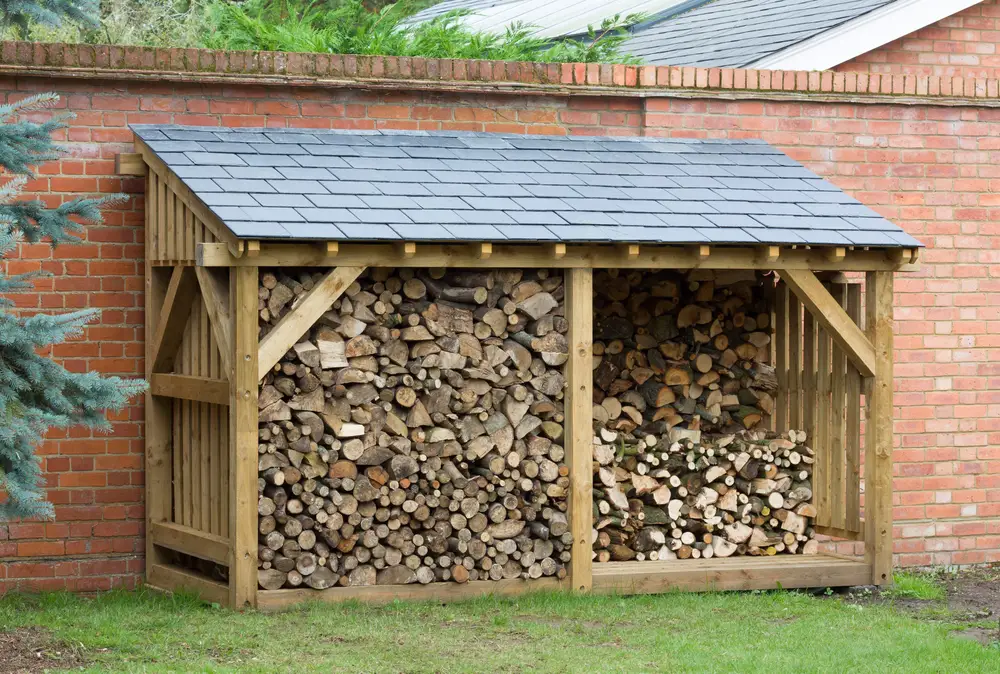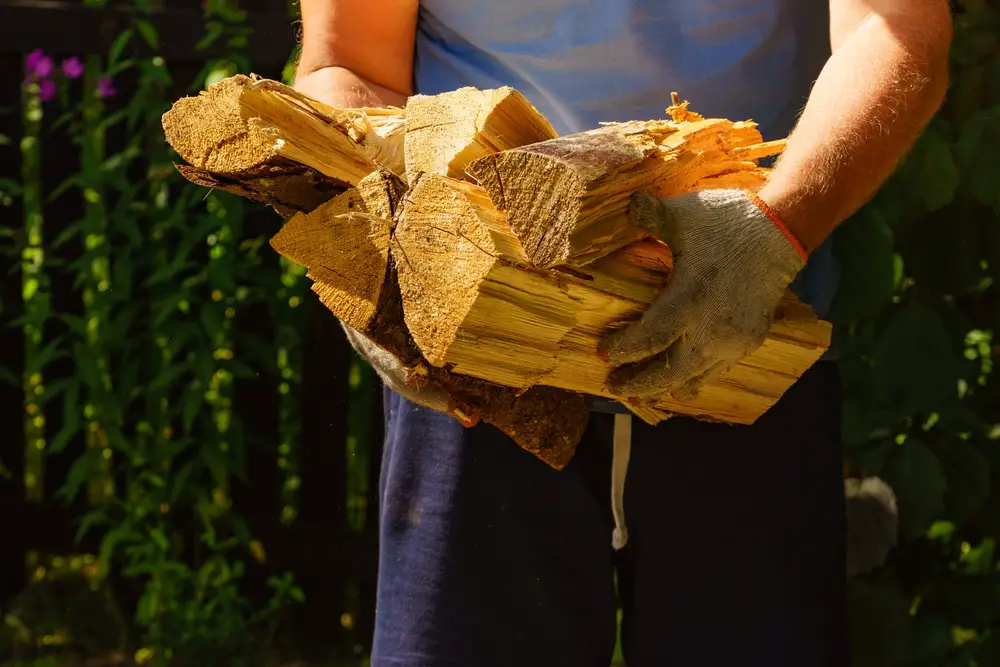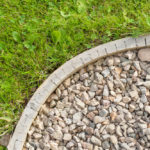Managing storage in the home is a task in itself. While we all try our best to clean our homes and have regular upkeep, if there aren’t good storage solutions set up in your home, it can quickly lead to a chaotic mess.
The front yard and backyard are two areas of the house that need proper storage and organization to maintain a happy home. If you’ve recently installed a fire pit, wood stove, or indoor fireplace, you may have realized there are even more things to store. For regular maintenance, having iron tongs and a cleaning brush handy are just some fire pit accessories that need their own storage.
Perhaps the hardest thing to store is firewood. You end up with tons of firewood that all has to keep dry and relatively moisture-free throughout the autumn and winter seasons, which can be difficult with constantly changing weather.
Firewood stacking and creating a storage area just for firewood is the best way to store it. After all, you’ll have hundreds of firewood logs to store, so they should have their own storage.
In this article, we’ll go over the benefits of stacking firewood, the best methods, and the best firewood storage products.
Benefits of Stacking Firewood

Stacking firewood is the best, most efficient way to store firewood. If wood is in a neat stack, it can prevent moisture and critters from entering wood logs and spreading out, potentially ruining your entire batch of firewood. More moisture can also create mold, ultimately leaving you with firewood that is unusable for burning.
Stacking firewood also makes it easy to access. Firewood stored in piles can create a mess in your storage area and quickly become a bigger problem. That’s why the best way to store firewood is by stacking it up against a wall, with the split logs facing down.
How to Properly Stack Firewood
Whether you’ve chopped the firewood yourself or bought split wood from a local dealer, you’re probably left with a cord or more of firewood with nowhere to store it. The best method is to stack firewood length-wise against a wall.
The best location to store firewood is inside, in a dry and shaded area, like an outdoor storage shed or garage. Kiln-dried firewood stored indoors makes it less likely to have pest infestations and keeps it away from the elements.
Here are some simple do’s and don’ts when stacking firewood in the proper storage container.
DO
- Use a concrete or rock foundation. Using concrete flooring underneath your stacked firewood is ideal, as this will keep the wood cool and dry throughout the year.
- Place newer green wood at the bottom and older seasoned wood at the top. Using older wood first ensures that the newer green wood has enough time to be seasoned and properly dry out before using.
- Harvest wood in the late summer to early fall. This is the best time to harvest firewood from your local seller or collect it yourself in your or your neighbor’s backyard.
- Stack firewood length-wise. This ensures that the wood is kept dry and maintains its shape over time.
DON’T
- Store firewood outside on the ground. When exposed to the elements, firewood can get wet and attract bugs, disease, and grow mold. You can store firewood in outside storage, but you should shield it from rain and snow.
- Store firewood in a pile. Stacking logs in a non-uniform wood pile can also attract moisture and mold to the firewood.
- Store in a basement or attic. While indoors, a basement or an attic can attract dust, moisture, insects, and rodents.
- Stack firewood too close to the wall. Keep stacks of firewood against a wall, but ensure there are a few inches of space between the firewood and the wall to allow for proper airflow behind the stack.
Where to Store Firewood

The best location to store firewood is an outdoor enclosed storage area, where it’s dry and safe from the elements. If you don’t have room in your garage, you can store firewood in your outdoor shed or a pop-up storage tent specifically for firewood storage.
You shouldn’t cover firewood with a tarp, but it should be in a dry, well-ventilated area where it stays away from moisture and maintains proper airflow. A garage or outdoor wood shed are perfect areas for this, with the firewood stacked on a wood rack, like metal firewood racks or wooden pallets.
Stacking firewood outside can be a fire hazard, so make sure you find an opaque storage tent that won’t let in too much sunlight. Keep the firewood outside where it can age well and have enough airflow to prevent moisture or critters from ruining the wood. Keep firewood at least 20 feet away from your entryway doors to prevent pests from having an easy gateway to your home.
A proper firewood storage area can also act as storage for other areas of your backyard, like gardening supplies, handy tools, or outdoor kitchen storage. Just keep any flammable materials away from the stacks of wood, as those are best stored elsewhere.
Conclusion
Firewood has plenty of tried-and-true storage methods that take a bit of setup but are easy to maintain and a necessary part of owning a fireplace or outdoor fire pit. Proper firewood storage products should keep stacks of firewood safe from water damage while avoiding any potential fire hazards.
Stacking firewood is the ideal method for storing firewood in your home. Store your firewood outside to prevent fire hazards and keep critters or bacteria from entering your home.
When autumn and winter roll around, your fireplace or wood stove will be ready with all the tools and trimmings in place. You and your family and friends can cozy up to the warm fire with little worries, knowing the essentials are in place to enjoy the best a fireplace has to offer.





